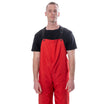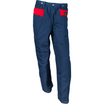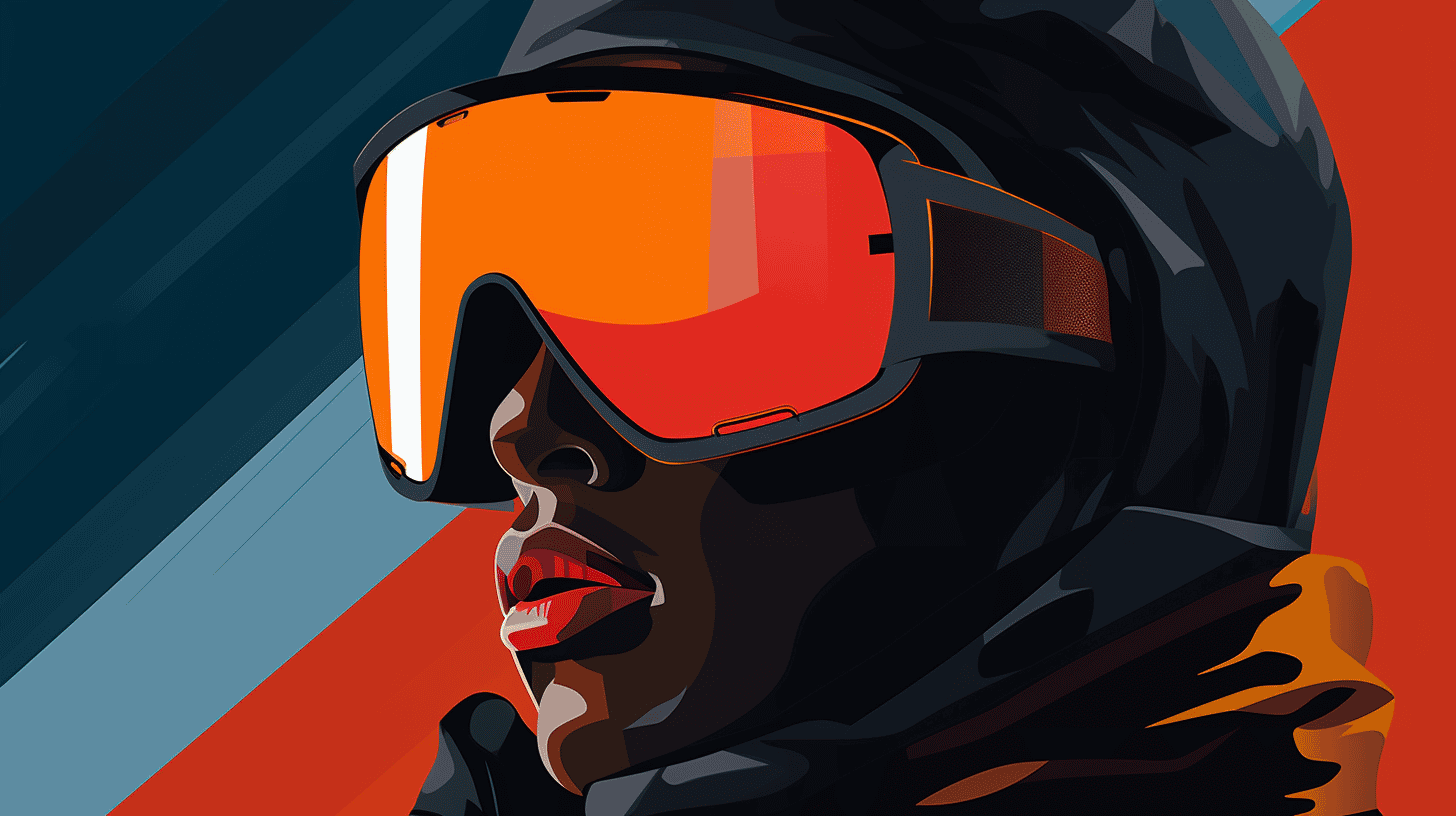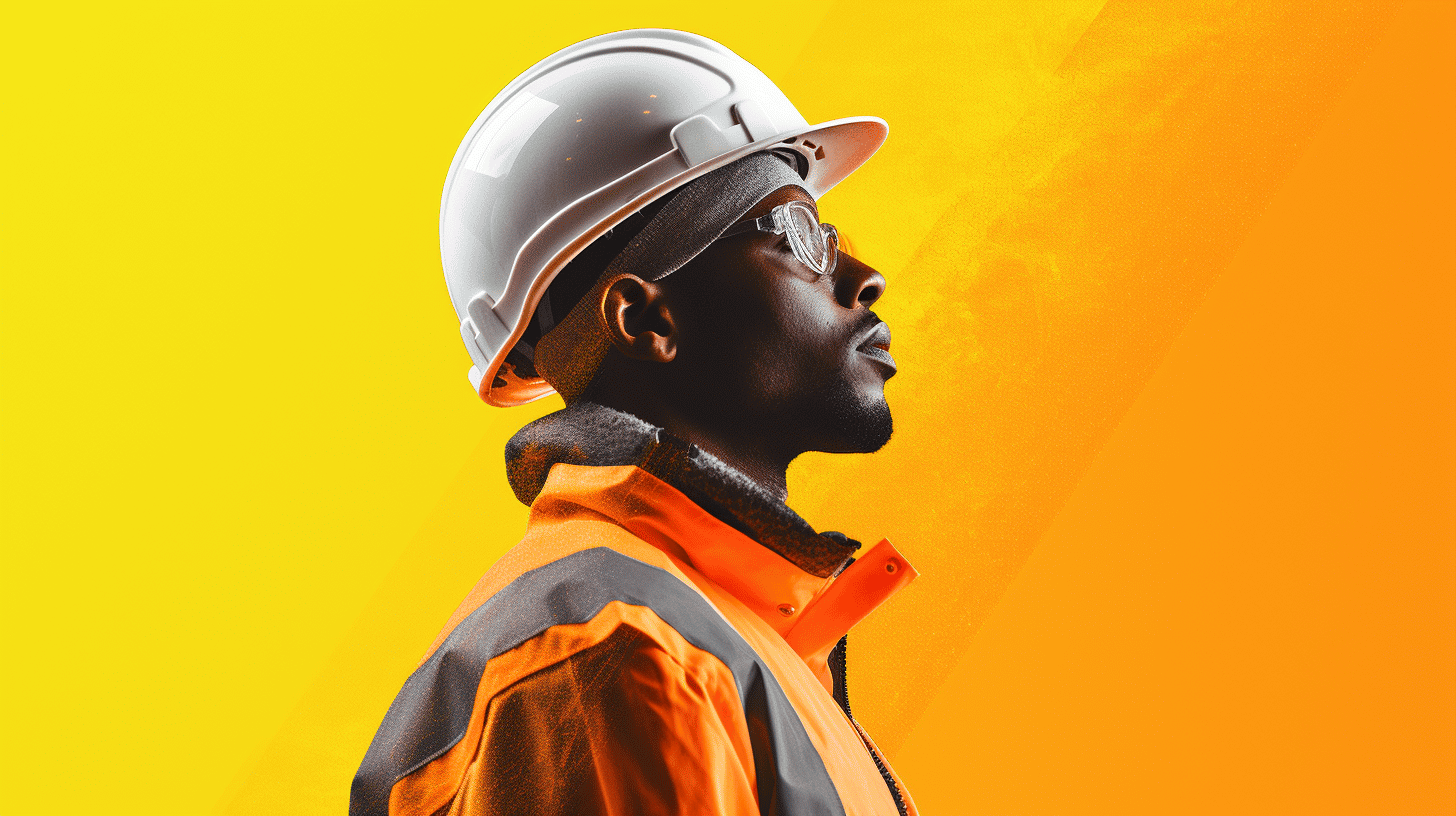In our everyday life scenarios, our eyes face several potential hazards. Indeed, our sight is one of the most important senses that allow us to interact with the world around us, making eye safety crucial to our overall well-being. This introduction leads you into the realm of protective eyewear, a safety tool used across diverse sectors ranging from industrial workplaces and sports fields to military operations and medical applications. Our eyes are delicate, susceptible to injuries and damages from various threats, and protective eyewear serves as a barrier to shield our priceless sight. In this article, we will discuss why protective eyewear is essential, what features to look for in a reliable safety glasses, it's impact on the global market, and what the future holds for it. Buckle up for an enlightening journey into the world of protective eyewear!
The Importance of Protective Eyewear
The gift of sight is one of our most treasured senses. However, in certain environments, especially at workplaces across various sectors, this gift can be highly susceptible to damage. This is where the significance of protective eyewear comes into the picture. When used effectively, protective eyewear can serve as a crucial line of defense against numerous job-related eye injuries.
Preventing Job-Related Eye Injuries
According to the National Institute for Occupational Safety and Health (NIOSH), every day about 2,000 U.S. workers have a job-related eye injury that requires medical treatment. These injuries can range from simple eye strain to severe trauma that can cause permanent damage, vision loss, or even blindness. But here's the silver lining - nearly 90% of these injuries are preventable with the use of proper safety eyewear.
Let's delve deeper and understand why protective eyewear is so essential:
Guarding Against Physical Hazards
Just imagine a construction worker hammering away at a concrete wall. Suddenly a chip of concrete ejects at a high speed, heading straight for his eyes. It could result in a severe eye injury, but with the right protective goggles, this worker can walk away unscathed. Similar situations can occur in various industries, including carpentry, metalwork, and electrical.
Protection Against Chemical Hazards
Workers in laboratories, factories or cleaning services often handle chemicals that can cause serious eye burns. Protective eyewear such as goggles or face shields can prevent these chemicals from coming in contact with the eyes.
Avoiding Radiant Energy
Exposure to radiant energy from welding can cause a condition known as 'welder's flash', which ultimately leads to vision problems. The right safety eyewear can shield the eyes from harmful ultraviolet and infrared radiation.
In short, protective eyewear is more than just a precautionary measure – it’s a vital part of worker safety. Therefore, it's crucial that every organization provides adequate eye protection equipment to their workers.
To bring about change, it's necessary to stress the effective use of protective eyewear. Its role in significantly reducing job-related eye injuries can not be understated. Let's remember, workplace safety is not an option, it's a necessity.
Features of Effective Safety Glasses
Whether you're a seasoned craftsman, an enthusiastic DIY lover, or an industrial worker, there's no denying the importance of safety glasses. These valuable pieces of personal protective equipment shelter your eyes from potential hazards, keeping your vision intact and your productivity unhampered. But what makes a pair of safety glasses effective? Below, we've highlighted some key features to look for when selecting a reliable pair of safety glasses.
Impact Resistance
One critical feature of safety glasses is their impact resistance. This ability determines how well your glasses can withstand physical shocks without shattering or becoming dislodged. A pair of safety glasses featuring high impact resistance ensures your eyes remain protected even in the face of unpredicted accidents, chemical splashes, or flying debris. From construction sites to woodworking ventures, impact resistance adds an essential safety layer to your eyewear.
UV Protection
Another noteworthy feature to consider is UV protection. The harmful rays of the sun are a serious threat to your visual health, potentially causing conditions like cataracts and macular degeneration. Quality safety glasses typically have built-in UV resistance, filtering out these damaging rays before they can reach your eyes. Don't forget to look out for this feature, especially if you often perform tasks outdoors.
Customizability in Prescription Lenses
A good pair of safety glasses isn't just about protection; it should also offer clear vision. Many people require prescription glasses for optimal eyesight, and integrating these prescriptions into safety glasses ensures clear sight while maintaining high safety standards. Thus, customizability in prescription lenses is a feature worth factoring in when choosing safety glasses. This ensures you can work effectively without the need for a secondary pair of eyewear.
Side Shields and Wraparound Designs
Last on our list, but certainly not the least, are side shields and wraparound designs. While the front of your eyes is the most exposed, it's also crucial to consider lateral protection. Side shields act as an extra barrier against dust, debris, and chemical splashes coming from the sides. Similarly, wraparound designs cover a larger area, providing more comprehensive protection. These features enhance the protection offered by safety glasses, especially in highly dynamic work environments.
Indeed, safety glasses serve as your reliable allies in various roles, from professional applications to home improvement tasks. By concentrating on the features outlined - impact resistance, UV protection, customizability in prescription lenses, and side shields with wraparound designs - you can ascertain the effectiveness of your safety glasses. Always remember, in any task, your safety should always take precedence, and choosing the right safety eyewear is a crucial step towards that.
Economic Overview of Global Protective Eyewear Market
The protective eyewear market has demonstrated steady growth on a global scale in recent years. This growth has been fuelled by increasing awareness among consumers about eye safety, a rise in the number of workplace eye injuries, and advancements in eyewear technology. Drawing upon recent industry data, we can anticipate that this trend is set to continue, ultimately leading to a substantial increase in market value.
Our first noteworthy observation is the projected value of the global protective eyewear market. By 2023, it is estimated to reach USD 2.7 billion. This projection reaffirms the positivity surrounding the industry's future, reflecting growing consumer demand for protective eyewear and businesses' response in catering to this demand.
However, the industry's growth does not stop there. It is envisaged to expand further, with the safety eyewear market expected to grow at a Compound Annual Growth Rate (CAGR) of 4.0% between 2024 and 2030. Considering the industry's estimated worth of USD 2.69 billion in 2023, this suggests it will rise to USD 2.88 billion by 2024, reflecting a CAGR of 5.49%. Such figures represent a significant stride forward for the protective eyewear industry.
Zooming in on a regional perspective, we can see that the US protective eyewear market mirrors the global trend of steady growth: it is projected to register a CAGR of 3.3% between 2024 and 2032. Again, this confirms that the drive behind the market's growth is not confined to particular regions, but is a worldwide phenomenon.
In the light of these forecasts, it's evident that the protective eyewear market offers lucrative opportunities for both existing players and newcomers. With the right strategies in place, businesses can tap into this expanding market and enjoy the economic benefits that it promises.
Even though specific numbers can fluctuate, the overall trend remains clear: the global protective eyewear industry is on a robust growth path. And while growth can never be completely guaranteed, the indicators are certainly in favour of a bright future for those in the protective eyewear market.
Role of Comfort in Protective Eyewear
Visual impairments are often the result of preventable accidents in environments where protective eyewear should be utilized. However, an often-overlooked aspect of protective eyewear is comfort. Despite the primary purpose of these glasses being to shield the eyes, the comfort of the wearer is a factor that can greatly influence their effective usage. Essentials, such as an ergonomic design and adjustable features, translate into higher compliance among users. Let’s delve deeper into the role comfort plays in protective eyewear.
When talking about protective eyewear, the focus is usually on resistance, durability, and safety rating. However, without the comfort factor, all these features can go in vain. Comfortability influences the willingness and propensity to wear eye protection. If a pair of safety glasses is uncomfortable, the chances are high that a worker might casually take them off now and then, thus exposing themselves to potential eye hazards.
Thankfully, many manufacturers have recognized the importance of comfort in protective eyewear. Consequently, they are incorporating functional features that augment comfortability, without compromising safety. Here are some of the features to look out for:
- Ergonomic Design: Ergonomic glasses accommodate an array of face shapes and sizes. They contour the face comfortably while ensuring that the eyes remain protected.
- Adjustability: Features such as adjustable nose pads, strap tension control, and flexible temples provide a custom fit for every individual user. This bodes well for long work hours where the glasses will consistently be worn.
- Lightweight Materials: The weight of the glasses is a contributing factor to comfort. Heavier glasses can cause strain on the nose or ears, leading to discomfort over prolonged periods. Therefore, choose protective eyewear made from lightweight materials like polycarbonate.
- Breathability: Foggy lenses can hinder vision, reducing the overall efficiency of the safety glasses. Look for eyewear with adequate venting or built-in anti-fog technology.
An oft-quoted saying concerning safety is "the best safety device is one that gets used". This mantra underscores the criticality of comfort in protective eyewear. The addition of comfort features in protective eyewear, such as ergonomic design and adjustability, encourage consistent use, thereby promoting eye safety over extended periods. Remember, prioritizing comfort helps facilitate user acceptance, increasing the likelihood of individuals wearing, and most importantly, keeping their protective eyewear on. It is this factor, combined with robust safety functionalities, that makes protective eyewear truly effective. So, the next time you're on the hunt for the perfect pair of safety glasses, don't overlook the comfort factor.
Safety Factors: High-impact Ratings and Resilient Materials
When it comes to protective eyewear, two crucial factors often come into play: the eyewear's high-impact ratings and the resilience of their materials. These elements are no mere technicalities; they are life-saving features that enhance the safety and performance of the eyewear.
Why are these factors so important? Let's dive right in.
High-Impact Ratings
High-impact ratings ensure that your protective eyewear can withstand high-impact forces without cracking, shattering, or damaging your eyes. You might think that this is a standard feature for any eyewear, but it's not. Shatter-resistant lenses are the result of meticulous tests and innovative technologies, which measures:
- The eyewear's resistance to sharp objects
- How effectively they handle sudden impacts
- Their ability to remain functional after these high-stress conditions
Given the delicate nature of the eyes, ensuring that your eyewear has a high impact-rating is a vital step towards preventing potential serious injuries.
Shatter-Resistant Materials
High-impact ratings wouldn't be possible without the use of resilient materials in protective eyewear. Employing shatter-resistant materials means going beyond basic plastic or glass lenses. The most suitable materials for this type of eyewear include:
- Polycarbonate: Probably the most utilized material due to its impressive toughness and lightweight nature.
- Trivex: Similar to polycarbonate but even lighter and more impact-resistant.
- Glass: Although heavier, some types of treated glass can offer superior clarity and resistance.
It's essential to note that the type of material used often dictates the eyewear's weight, clarity, and cost. Therefore, choosing the right material should factor in your specific needs and the potential hazards you may encounter.
"High-impact ratings and shatter-resistant materials are fundamental safety features of protective eyewear." - that's not just a promotional slogan, it's a valuable guide to prioritizing our eye safety. In a world where our vision is continually exposed to risks, from industrial hazards to sports and routine daily tasks, investing in protective eyewear with high-impact ratings and resilient materials is not just a wise choice - it's a necessity.
Global Military Protective Eyewear Market
The global military protective eyewear market is a rapidly growing sector as it provides vital protection and support to military personnel worldwide. Strategically crafted, these pieces of gear ensure safety in varied challenging terrains and situations faced by the military.
In 2023, the Global Military Protective Eyewear Market held a significant value, reaching USD 135.68 million. It has thus become an essential part of the military equipment sector. While this number itself is massive, it's also worth noting that this value is expected to grow even more. Forecasts suggest the CAGR (Compound Annual Growth Rate) of the market will hit a sturdy 5.95% rate. This predicted growth might endow the lucrative market with a more vital position internationally.
Wondering about the specific factors that have potentiated this powerful growth? Let's dive into those in detail:
- Increasing security threats: In today's turbulent geopolitical climate, the demand for the highest quality protective gear, including eyewear, has increased substantially. This increase is due to growing security threats and conflict zones globally.
- Technological advancements: As the world of technology continues to expand, so too does our ability to create more advanced, more protective eyewear. These advancements have led to amplified production and, consequently, growth within the market.
- Government investment: Government bodies globally have stepped up investment in quality military equipment like protective eyewear. This public sector investment is consistently fueling the upward trajectory of this market's value.
The market's determined expansion doesn't seem to be ceasing any time soon. With each passing year, the military protective eyewear market is making its mark in terms of both size and significance within the global market. This growth and unwavering support from global governments indeed illustrate the market's robust potential for future profitability.
In the continually evolving world of protective military gear, the eyewear market stands as a shining example of growth and untapped potential. As technological advancements and heightened security needs propel its growth, the Global Military Protective Eyewear Market continues to prove its indispensability. So why is this important? It shows that the advancements are not merely about improving the profitability of a sector. They are about ensuring the safety of our military personnel – the very people who risk their lives for our security. As we continue to journey into this exciting market, one thing remains clear - the military protective eyewear market is headed towards a future of growth, innovation, and immense strategic importance.
Conclusion: The Future of Protective Eyewear
Advancements in the field of protective eyewear continue to remind us of the commitment to safety and comfort in rigorous work environments. The coming era anticipates the integration of smart technology into protective eyewear, paving the way for an augmented workforce that is prepared for challenges whilst safeguarding their health.
For those engaged in tasks that involve heavy machinery, such as chainsaw operators, safety eyewear is of paramount importance. To enhance this protection, they could pair their eyewear with durable work gear. And that’s where Rain Gear Pro steps in. Not only are their products meticulously crafted to provide unrivalled protection, but they also boast superior comfort, ensuring your designed work gear doesn't hold you back while you propel into the future.
Say goodbye to the notorious crotch blowout with Rain Gear Pro's precision-crafted saw pants! Made with Kevlar inserts, these pants are perfect companions for protective goggles and a testament to the company's commitment to your safety and comfort.
In conclusion, it's not just about shielding our precious sight but also about innovating a new way of life–one that combines safety, efficiency, and comfort. The future is here, and it's clear–with the right protective eyewear and safety gear from brands like Rain Gear Pro, the future is indeed much brighter, and safer too.
Frequently Asked Questions
-
Why is protective eyewear essential?
Protective eyewear is essential to safeguard your eyes from potential hazards such as flying debris, chemicals, dust, and UV radiation. It helps prevent injuries, maintain healthy vision, and comply with safety regulations.
-
What are some key features to consider when choosing protective eyewear?
When choosing protective eyewear, consider features like impact resistance, UV protection, anti-fog coating, scratch resistance, comfort, fit, and compatibility with prescription glasses.
-
Who needs to use protective eyewear?
Anyone who engages in activities or work environments that pose risks to eye safety needs to use protective eyewear. This includes professionals in construction, manufacturing, healthcare, laboratories, sports, and DIY enthusiasts.
-
Can I use regular sunglasses as protective eyewear?
Regular sunglasses may not provide adequate protection against specific hazards. Protective eyewear is specifically designed and tested to meet certain safety standards, ensuring proper eye protection in hazardous environments.
-
How do I care for and maintain my protective eyewear?
To prolong the life and effectiveness of your protective eyewear, clean them regularly with mild soap and water, avoid using harsh chemicals or abrasive materials, store them in a protective case when not in use, and replace any damaged or worn-out eyewear.





















Leave a comment
This site is protected by hCaptcha and the hCaptcha Privacy Policy and Terms of Service apply.